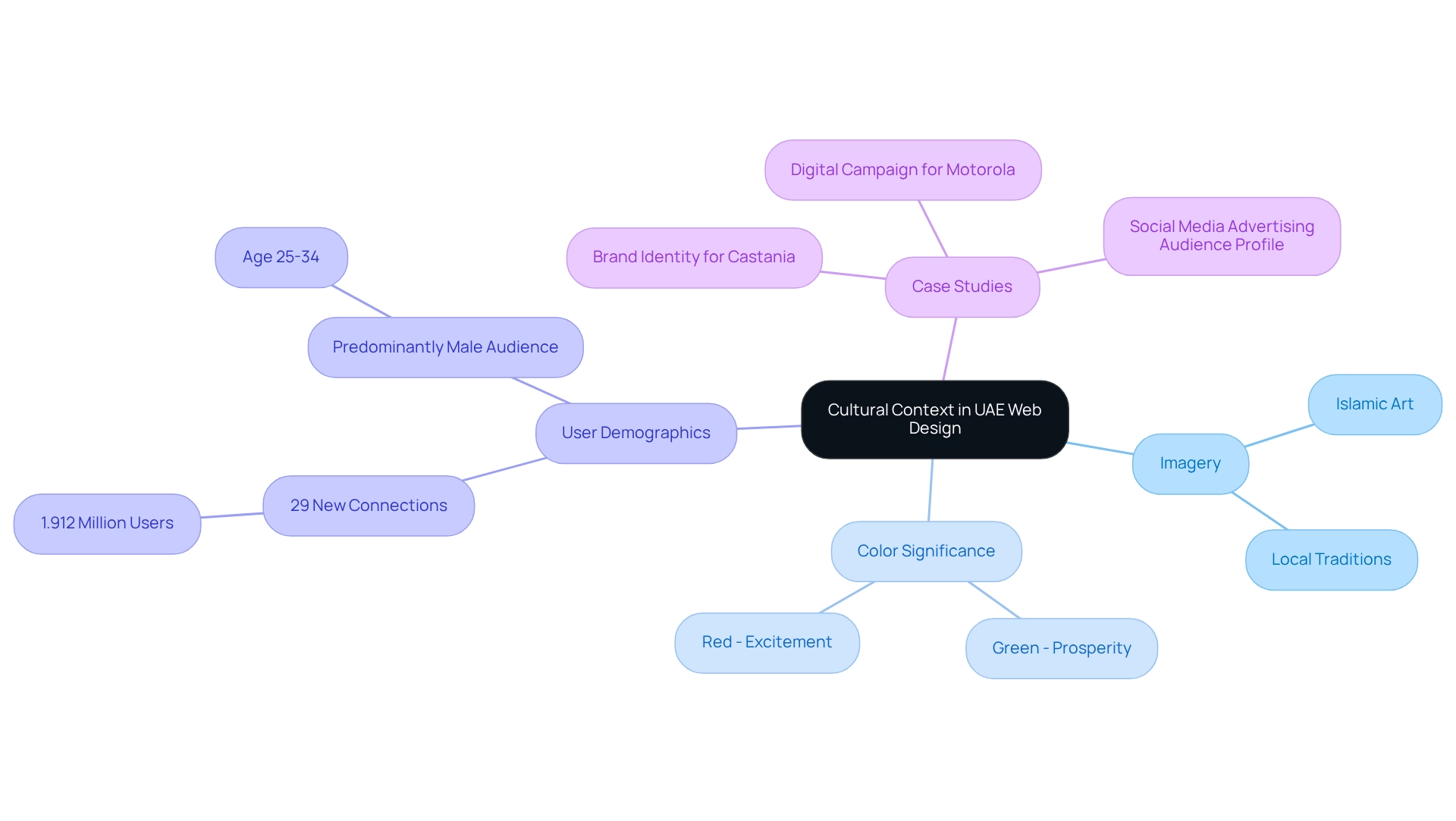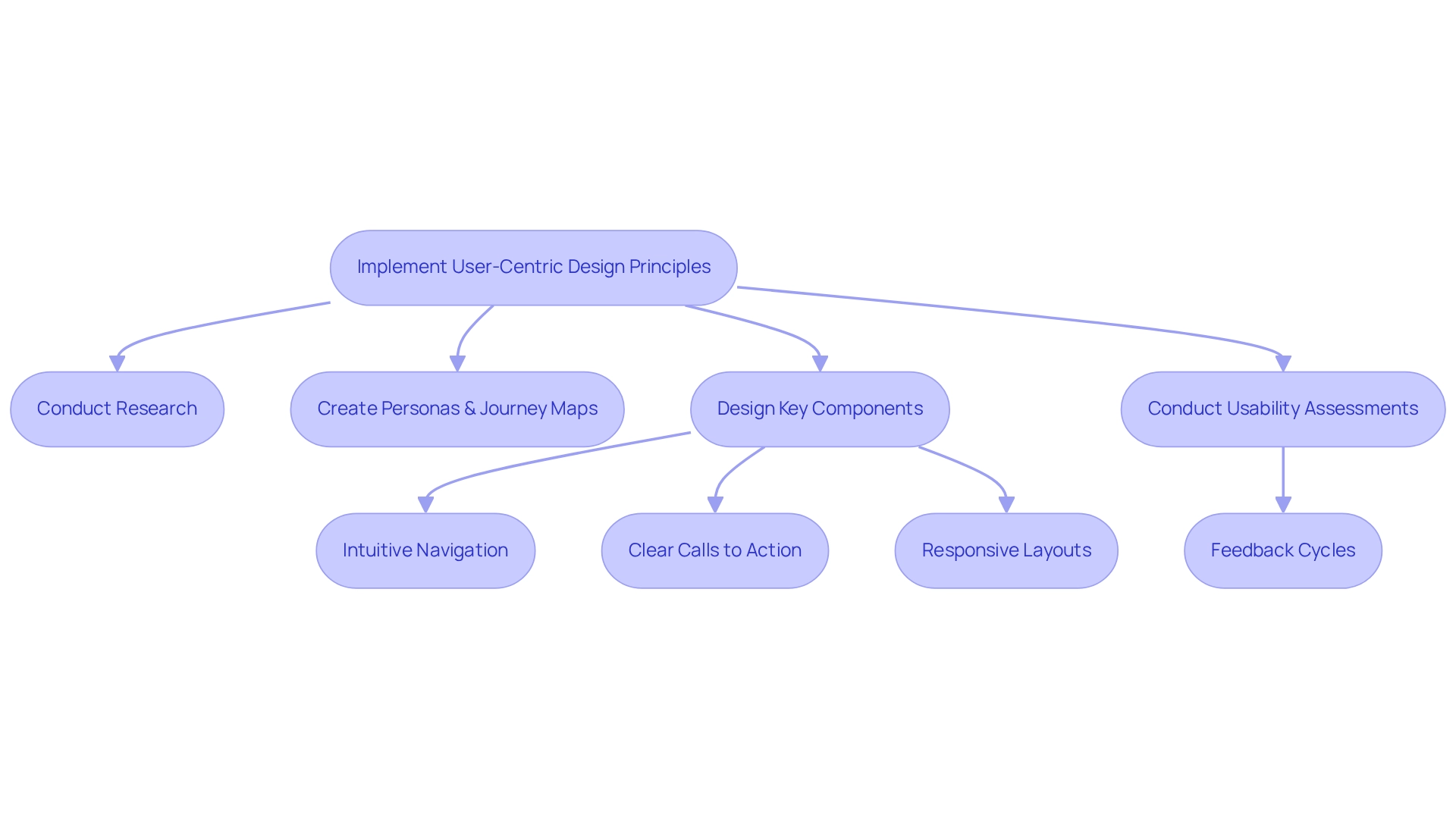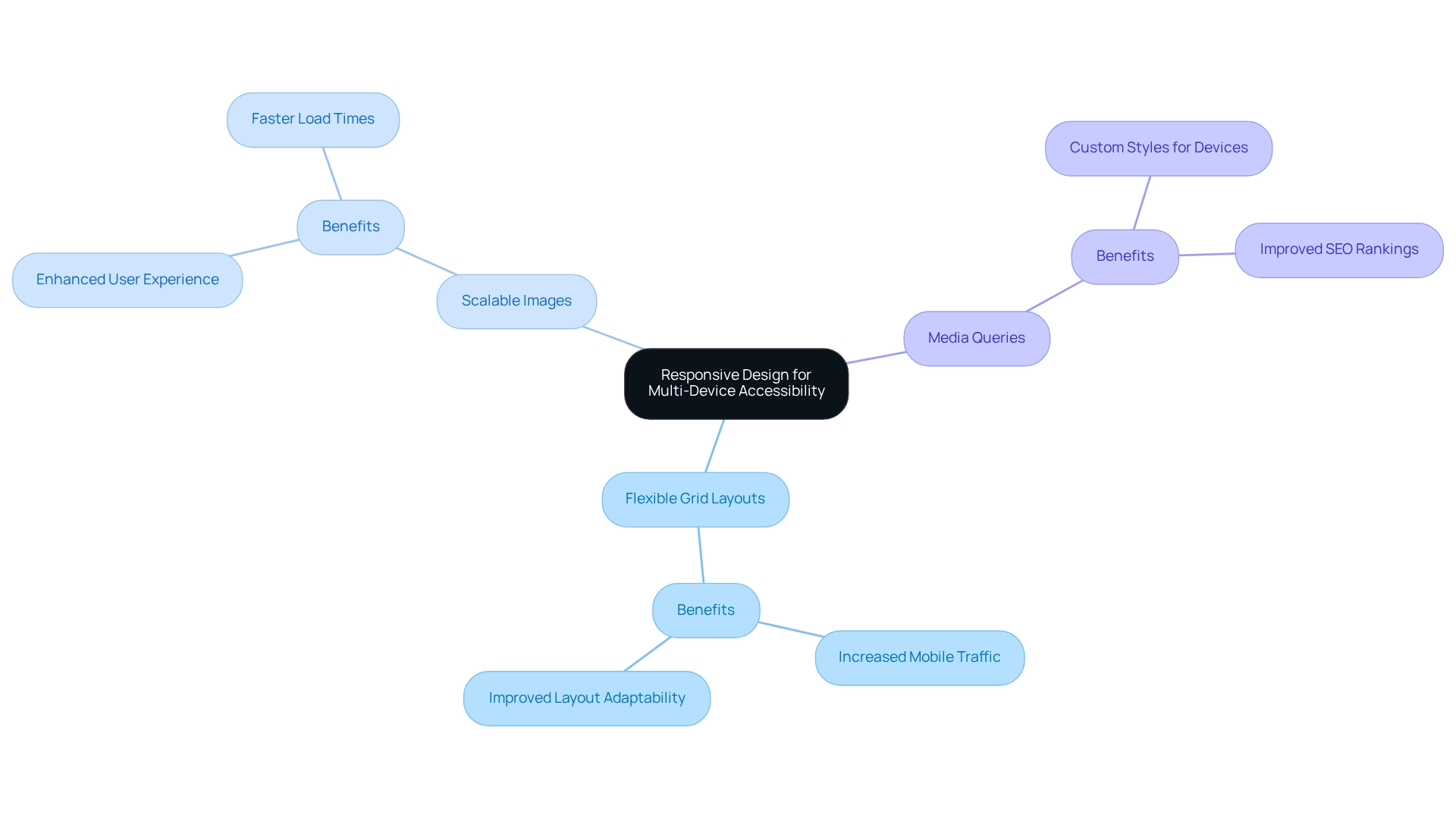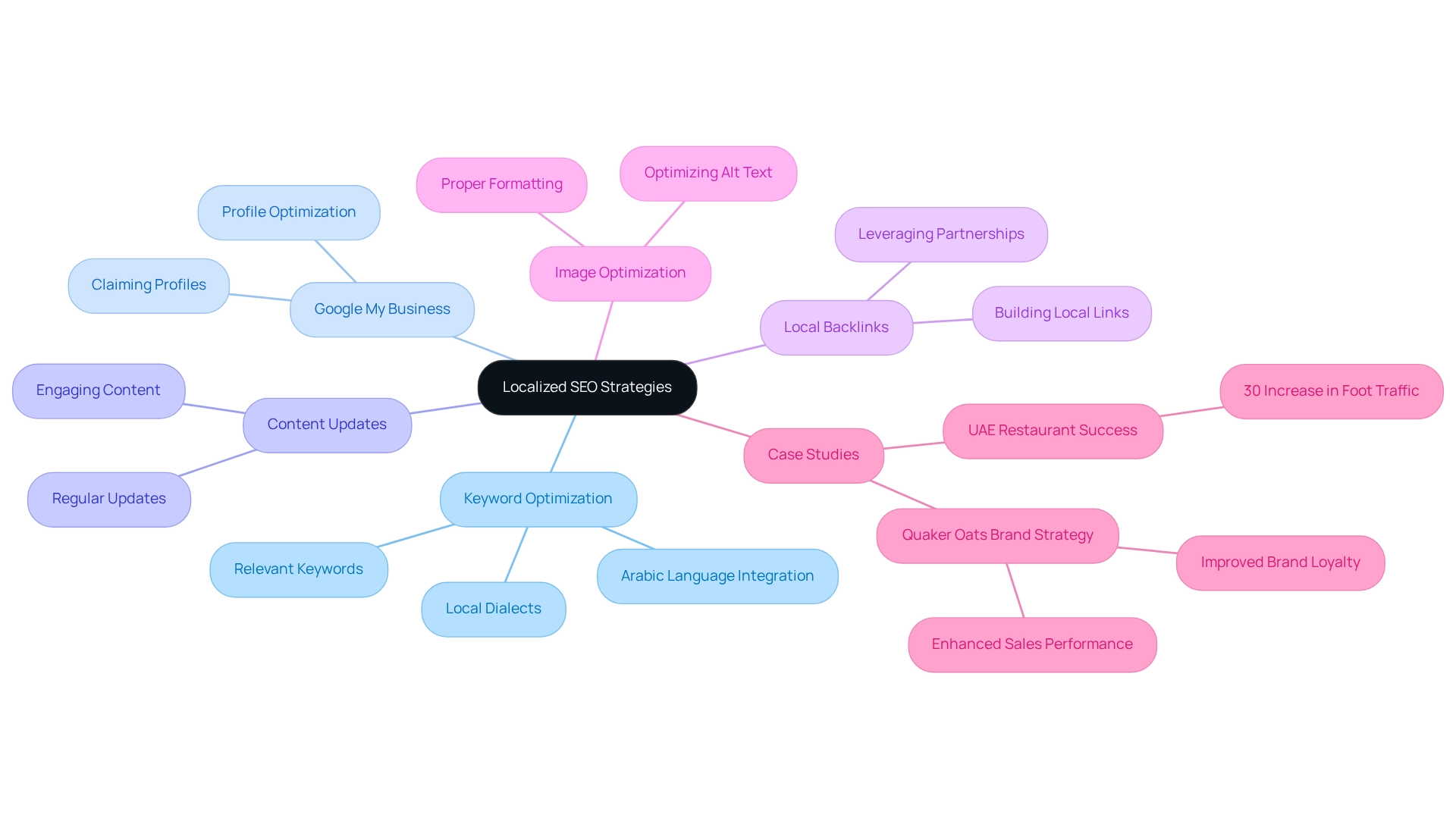Sustainable Branding Practices
Best Practices for Web Design in the UAE: Enhance User Experience
Overview
Best practices for web design in the UAE are centered on enhancing user experience by embracing:
- Cultural sensitivity
- User-centric design
- Responsive layouts
- Localized SEO
- Analytics-driven improvements
By aligning web aesthetics with local cultural values and employing techniques such as responsive design and user research, businesses can significantly boost user engagement and satisfaction. This is not merely theoretical; successful case studies and statistics provide compelling evidence of these strategies in action. Brand Managers must recognize that adapting to these practices is essential for achieving success in a competitive digital landscape.
Introduction
In the vibrant and diverse landscape of the UAE, web design transcends mere aesthetics; it becomes a reflection of cultural identity and user experience. As businesses strive to captivate a broad audience, understanding the cultural context is paramount in crafting websites that resonate deeply with local traditions and values.
The strategic use of color symbolism and the incorporation of local art are vital design choices that can significantly influence user engagement and satisfaction. This article delves into the essential aspects of effective web design in the UAE, exploring:
- User-centric principles
- Responsive layouts
- Localized SEO strategies
- The power of analytics
Together, these elements create websites that not only attract users but also foster loyalty and drive business success.
Understand Cultural Context in UAE Web Design
In the UAE, effective web development must intricately reflect the cultural nuances and preferences of its diverse population. This involves selecting imagery, color schemes, and content that resonate with local traditions and values. For instance, incorporating elements of Islamic art and architecture fosters a sense of familiarity and comfort among users. Understanding the cultural significance of colors—such as green, symbolizing prosperity, and red, denoting excitement—can greatly influence creative decisions.
Engaging with local stakeholders throughout the development process is essential, as it provides valuable insights into cultural expectations and preferences. A significant statistic reveals that 1.912 million users, or 29.00%, are involved in establishing new connections, underscoring the importance of culturally resonant aesthetics in attracting and retaining users. Additionally, insights from a case study on social media advertising indicate that the predominant male audience, particularly in the 25-34 age range, highlights the necessity for tailored web development strategies that cater to this demographic.
As Pastor Pax Tan Chiow Lian aptly states, “It is one thing to believe and practice our faith, it is another thing to really go down to the ground and see how our faith can be translated into use for people who are asking for help.” This perspective emphasizes the practical implications of cultural sensitivity in website creation.
A successful website redesign case study in the UAE illustrates how applying best practices for web design in the UAE, with a focus on cultural sensitivity, led to improved user engagement and satisfaction. By aligning aesthetic choices with the cultural context, brands can utilize the best practices for web design in the UAE to create websites that are not only visually appealing but also profoundly resonate with their audience, ultimately driving enhanced engagement and loyalty. Client success stories, such as the brand identity enhancement for Castania and the digital campaign for Motorola, further exemplify the effectiveness of culturally sensitive creative practices in achieving measurable outcomes.

Implement User-Centric Design Principles
Implementing user-centric design principles is vital for crafting a user-friendly website. This process commences with thorough research aimed at understanding the target audience’s needs, preferences, and pain points. Techniques such as personas and journey mapping empower designers to visualize the user experience and pinpoint areas for enhancement.
Key components of user-focused development include:
- Intuitive navigation
- Clear calls to action
- Responsive layouts that adapt seamlessly to various devices
These components align with the best practices for web design in the UAE. For instance, a UAE-based e-commerce site that optimized its checkout process witnessed a significant reduction in cart abandonment rates, demonstrating the profound impact of user-focused strategies on conversion rates.
Furthermore, conducting regular usability assessments and feedback cycles is crucial for refining the layout, ensuring it consistently aligns with audience expectations. Notably, 66% of mobile sites have tappable elements that are too close together, and 32% feature elements that are overly small, underscoring the necessity for meticulous attention to detail.
Additionally, 91% of dissatisfied clients who do not voice their concerns vanish without providing feedback, emphasizing the importance of gathering insights to inform design decisions. The role of personalization in mobile marketing further illustrates that tailoring experiences to individual preferences significantly enhances customer engagement and satisfaction.
By prioritizing audience research and adhering to these principles, brands can effectively bolster their online presence and drive engagement.

Adopt Responsive Design for Multi-Device Accessibility
In modern web development, adhering to the best practices for web design in the UAE is essential, particularly due to the exceptionally high usage of mobile devices. Websites must be designed to automatically adapt their layout and content based on the device—whether it’s a smartphone, tablet, or desktop. This adaptability can be achieved through:
- Flexible grid layouts
- Scalable images
- Media queries that modify styles for various screen sizes
A notable example is Al-Futtaim Travel, a UAE-based travel agency that implemented a responsive layout, resulting in a remarkable 40% increase in mobile traffic and a 25% rise in bookings. By prioritizing responsive design, which is one of the best practices for web design in the UAE, businesses not only enhance customer satisfaction but also improve their search engine rankings, as search engines increasingly favor mobile-friendly websites.
According to Statista, “Mobile apps now dominate web page views, surpassing desktops by 5.64%. In 2021, mobile apps accounted for 55.64% of web page views.” With mobile apps accounting for over 55% of web page views, implementing the best practices for web design in the UAE to optimize for mobile accessibility is no longer optional; it is a necessity for driving conversions and revenue growth in the region. Companies must also refine their approaches for the mCommerce market to effectively accommodate various popular online payment methods, further enhancing user experience.

Integrate Localized SEO Strategies for Enhanced Visibility
To enhance online visibility, it is imperative for companies in the UAE to incorporate localized SEO approaches. This strategy involves optimizing website content with relevant keywords that align with local search behavior, including the integration of Arabic language options and local dialects. Additionally, claiming and optimizing Google My Business profiles is critical, as it significantly boosts local search results.
A compelling case study of a UAE-based restaurant that implemented localized SEO techniques revealed a remarkable 30% increase in foot traffic within just three months. Similarly, comparable strategies were employed in WonderEight’s project for Quaker Oats, where tailored brand development led to improved brand loyalty and enhanced sales performance.
Regularly updating website content and leveraging local backlinks can further elevate search rankings, ensuring businesses effectively reach their target audience. As Mindy Weinstein highlights, optimizing images is a crucial yet often overlooked component of SEO, underscoring the necessity for comprehensive strategies that encompass all facets of website development.
Xavier Tan, co-founder of Heroes of Digital, aptly emphasizes, ‘Do the difficult things,’ which reinforces the importance of addressing challenging aspects of SEO, such as image optimization.

Leverage Analytics for Continuous Improvement
Employing analytics tools such as Google Analytics is essential for businesses aiming to enhance user experience through informed design choices. By meticulously tracking key metrics—like page views, bounce rates, and demographic information—designers can pinpoint areas that necessitate improvement.
For instance, concentrating on pages with a high bounce rate, particularly those attracting at least 10,000 entrances, can unveil critical insights. A notable case involves a UAE-based online retailer that utilized analytics to identify a significant drop-off rate on their product page. Following a redesign of the layout and a refinement of product descriptions, this retailer achieved an impressive 20% increase in conversions.
This outcome aligns with findings from a report that underscores the challenges faced by online retail today, further emphasizing the imperative of leveraging analytics for ongoing enhancement. Regular analysis of customer behavior not only empowers companies to adjust their strategies but also fosters continuous website improvement, ensuring they meet the ever-evolving demands of visitors.
As Dr. Dave Chaffey articulates, grasping user behavior is vital for optimizing conversion rates and applying best practices for web design in the UAE to boost overall user engagement in the competitive market. This proactive approach to analytics is indispensable for driving successful branding and marketing strategies.
![]()
Conclusion
Effective web design in the UAE is a multifaceted endeavor that demands a profound understanding of cultural context, user-centric principles, responsive design, localized SEO strategies, and the power of analytics. By weaving these elements together, businesses can create websites that not only captivate aesthetically but also resonate deeply with the local audience.
- Cultural sensitivity in design fosters user engagement and loyalty, as evidenced by successful case studies that underscore the value of aligning design choices with local traditions and preferences.
- Furthermore, prioritizing user-centric design guarantees that websites are intuitive and accessible, significantly enhancing the overall user experience.
- The adoption of responsive design is essential, addressing the high mobile usage in the UAE and facilitating seamless interaction across devices while improving search engine visibility.
Moreover, integrating localized SEO strategies is vital for maximizing online presence, while leveraging analytics enables continuous improvement based on insights derived from user behavior. By embracing these comprehensive strategies, businesses can adeptly navigate the competitive landscape, driving user satisfaction and business success.
Ultimately, the path to effective web design in the UAE lies in recognizing the intricate relationship between culture and technology. As businesses invest in culturally resonant and user-friendly websites, they not only attract a broader audience but also cultivate enduring connections that contribute to long-term success.
Frequently Asked Questions
Why is cultural sensitivity important in web development in the UAE?
Cultural sensitivity is crucial in UAE web development as it ensures that the website reflects the cultural nuances and preferences of its diverse population. This includes selecting imagery, color schemes, and content that resonate with local traditions and values, fostering familiarity and comfort among users.
How do colors influence web design in the UAE?
Colors have significant cultural meanings in the UAE. For example, green symbolizes prosperity, while red denotes excitement. Understanding these cultural significances can greatly influence creative decisions in web design.
What role do local stakeholders play in the web development process?
Engaging with local stakeholders throughout the development process is essential as it provides valuable insights into cultural expectations and preferences, which can enhance the website’s relevance and effectiveness.
What demographic is particularly important for web development strategies in the UAE?
A significant demographic to consider is the predominantly male audience aged 25-34, indicating the need for tailored web development strategies that cater specifically to this group.
Can you provide an example of successful culturally sensitive web design?
A successful website redesign case study in the UAE demonstrated that applying best practices for web design with a focus on cultural sensitivity led to improved user engagement and satisfaction, as seen in client success stories like Castania and Motorola.
What are key components of user-centric design principles?
Key components of user-centric design include intuitive navigation, clear calls to action, and responsive layouts that adapt seamlessly to various devices.
How can user-focused strategies impact conversion rates?
User-focused strategies, such as optimizing the checkout process on a UAE-based e-commerce site, can significantly reduce cart abandonment rates, demonstrating their impact on conversion rates.
Why is usability assessment important in web design?
Regular usability assessments and feedback cycles are crucial for refining the website layout, ensuring it consistently meets audience expectations and enhances user experience.
What statistics highlight the importance of user feedback in web design?
Notably, 91% of dissatisfied clients do not voice their concerns and vanish without providing feedback, emphasizing the importance of gathering insights to inform design decisions.
How does personalization affect customer engagement in mobile marketing?
Personalization in mobile marketing significantly enhances customer engagement and satisfaction by tailoring experiences to individual preferences.



